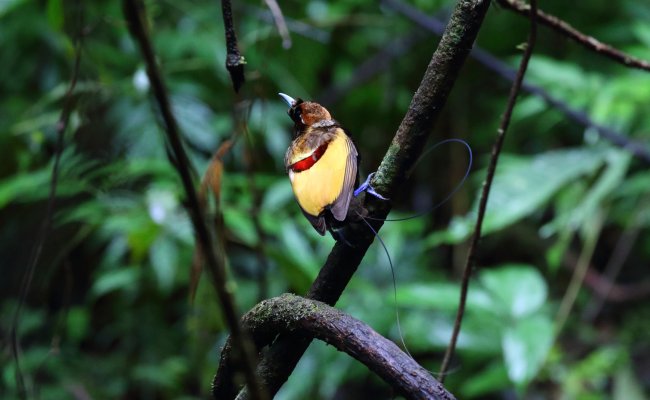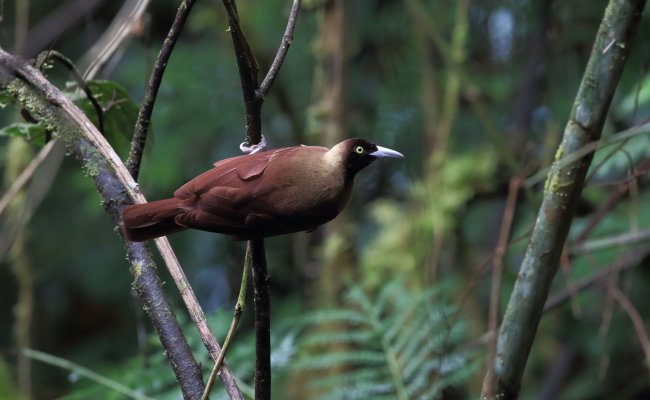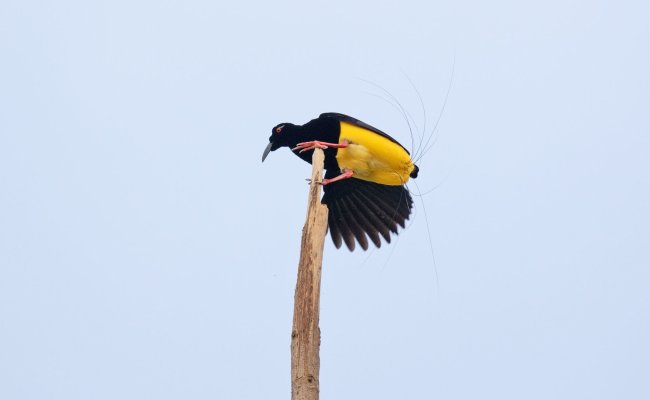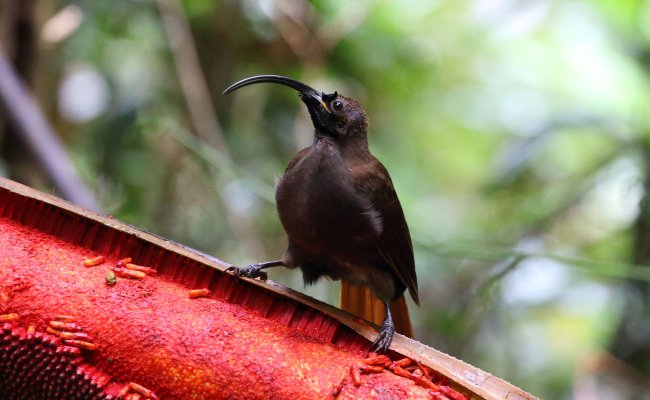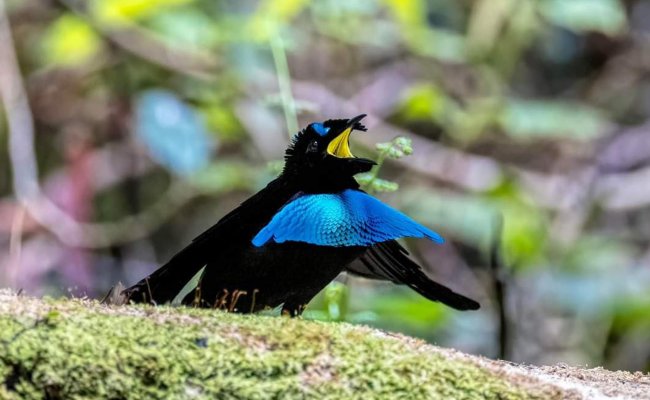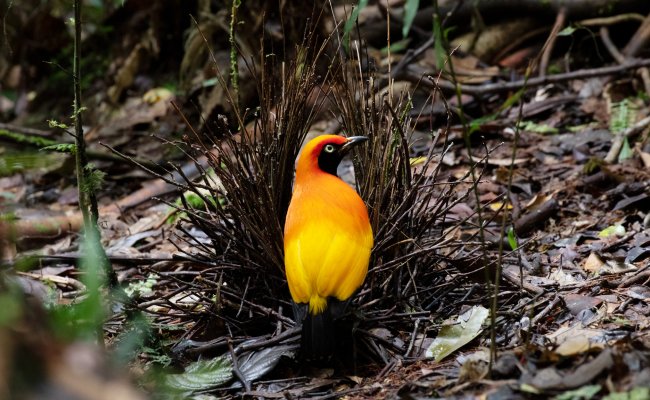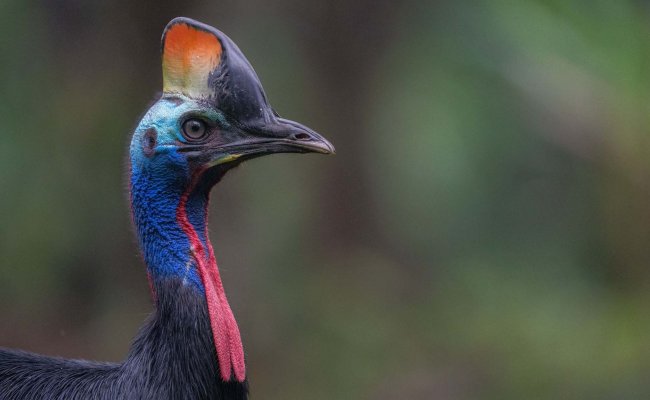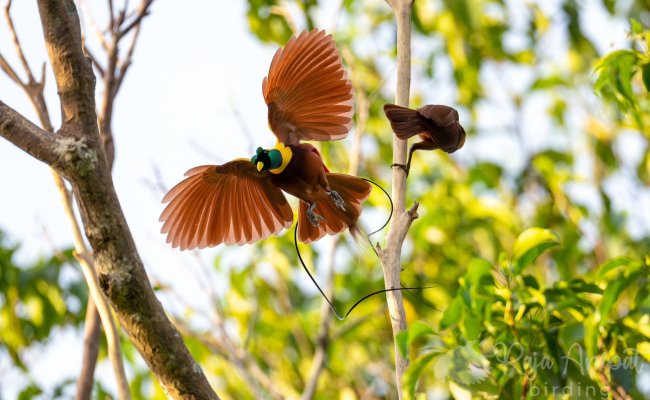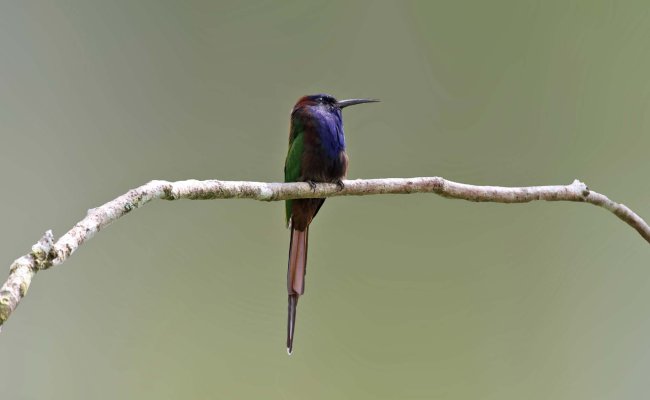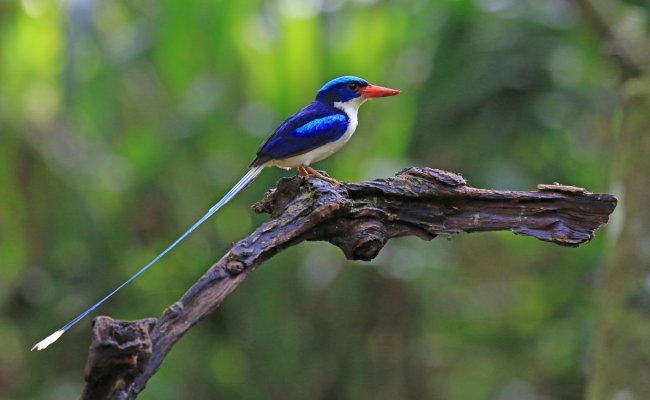Birds of Paradise Description by Papua Birding
King Bird of Paradise
Inhabits in lowland and hill forests to 300 m, locally to 1150 m, also secondary forest and forest edge. Male size from 16 cm to 31 cm with tail feathers. Female 17 cm. Endemic to New Guinea and Aru Island. Keeps mainly to the upper and middle stages, and is fond of vine tangles. Usually seen singly, sometimes loose flocks of up to ten birds at fruiting trees, males in auditory contact at displays trees.
Magnificent Bird of Paradise
Endemic to New Guinea, inhabits in hill forest most at 400 - 1200 m. Locally to 1780 m and as low as 100 m. Size 16 – 26 cm. The male has central tail feathers. Keeps to lower and middle stages. Takes fruit and insects. Heard more often than seen. Males quite vocal, display courts on the ground. Usually seen singly, males seem solitary, but female-plumaged birds form loose flocks of up to six individuals at fruiting bushes and trees. Identified as a small short-tailed Paradisaeid. Sexual dimorphic.
Wilson’s Bird of Paradise
Endemic to West Papua island. Monotypic. Size 16 – 21 cm. The male has central tail feathers. Found only on the Batanta and Waigeo islands. Inhabiting on hill and mid-montane forests, rarely in lowlands. Keeps mostly to the forest interior. Very vocal, display courts on the ground. Identified as a small short-tailed paradisaeid and one of the most striking of the smallest members of the family on account of its unusual color combination. The Wilson Bird of Paradise is found only on Waigeo island, Southwest Papua.
Red Bird of Paradise
Endemic to West Papuan island. Occurs only in the West Papuan islands of Batanta and Waigeo. Inhabiting in lowland and hill forest to 600 m. Size 30-33 cm (excluding tail wires). Keeps to the middle and upper stages. Works along branches like a woodpecker. Communal leks at huge forest trees may have up to twenty males. Sexual dimorphic. Red Bird of Paradise is found only on Waigeo Island, Southwest Papua Province.
Lesser Bird of Paradise
Endemic to New Guinea. Inhabits in lowland and hill rainforest, swamp-forest, second growth, disturbed areas, and montane Casuarina groves at up to 1550 m. Size 32 – 33 cm (excluding tail wires). Keeps to the middle and upper stages. Usually seen singly or in loose flocks at fruiting trees. Leks may have five to six adult males and half a dozen female-plumaged birds.
Twelve-wired Bird of Paradise
Endemic to New Guinea. Inhabits in swamp-forest and riparian forest with sago palms and Pandanus, also adjacent rainforest, in lowlands to 100 m. very much a lowland wet-forest specialist, wary but not particularly shy. Size 32 – 34 cm. Keeps to middle stages canopy. Male displays from barely exposed palm or vertical dead-tree tops. Usually seen singly. Displaying males will attract several female-plumaged birds and they join mixed-feeding flocks.
Western Parotia Bird of Paradise
Endemic to West Papua. Found in Vogelkop and Wandammen Peninsula. Inhibiting in mid-montane forests and old second growth at 1100 – 1900 m. Size 30 – 33 cm. Usually seen singly but in small groups at fruiting trees. Joined mixed flocks. Male almost entirely black, with erectile triangular silvery-white frontal chest, broad iridescent purple nuchal bar, and crown iridescent coppery bronze.
Vogelkop's Superb Bird of Paradise
Endemic to New Guinea. Size 25 – 26 cm. inhabits middle and upper montane forests, gardens, disturbed areas, and Casuarina groves at 850 – 2300 m, mainly 1650 – 1900. Keeps mostly to the middle stage and canopy, sometimes descending to lower levels. Display courts on saplings or trunks near the ground.
Black-billed Sicklebill
Endemic to New Guinea. Inhibits in montane forest at 1100-2000 m, rarely down to 600 m or up to 2250 m. Size 36 cm, usually seen singly. The male seems solitary. Female-plumaged birds rarely join mixed flocks at fruiting trees. Small sicklebill of forest interior with strongly decurved bill and rounded tail. Sexual dimorphic.
Black Sicklebill
The largest species in the family, distinctive, with a strongly decurved long bill, and a very long tail. Sexual dimorphic. Male size 63 cm to 110 cm and has a central tail. Female size 55 cm. Endemic to New Guinea. Inhabits in hill and lower montane forest mainly at 1800 – 2000 m. Locally down to 1280 m and up to 2860 m. Usually seen singly or in pairs. Males are mainly solitary. Male advertises from prominent songposts on ridge sides, particularly in the early morning.
Pale-billed Sicklebill
Found in lowland rainforest in North New Guinea from East Geelvink Bay east to Vanimo region and NW Sepik drainage, to 180 m. Sometimes at edges and in logged areas. Endemic to New Guinea. Size both male and female 35 cm. Uncommon and inconspicuous. Heard more often than seen. Takes fruit and insects. Joins mixed-species flocks. Usually seen singly. Small sicklebill with strongly decurved pale bill and rounded tail.
Magnificent Riflebird
Nominate race in West and Central New Guinea. Inhabits in lowland and hill forest and gallery forest to 1200 m, locally to 1450 m and rarely higher. Male size 34 cm and female 28 cm. Australasian endemic. Keeps to the middle and upper stages. Very wary, heard more often than seen. Usually seen singly or in twos, sometimes up to four together but usually only one adult male with such groups. Joins mixed-species feeding flocks.
For those of you who plan to see or want to photograph Bird of Paradise in Papua, Kindly please feel free to contact Mr. Mohamad Naliko or send us an email to info@papuabirding.com
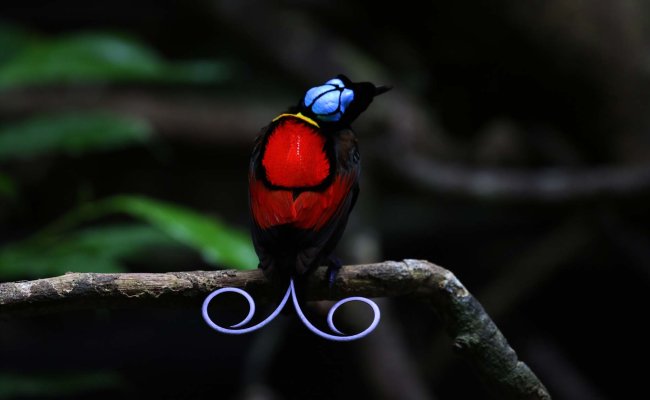 Wilsons Bird of Paradise, Image by Mohamad Naliko
Wilsons Bird of Paradise, Image by Mohamad Naliko
